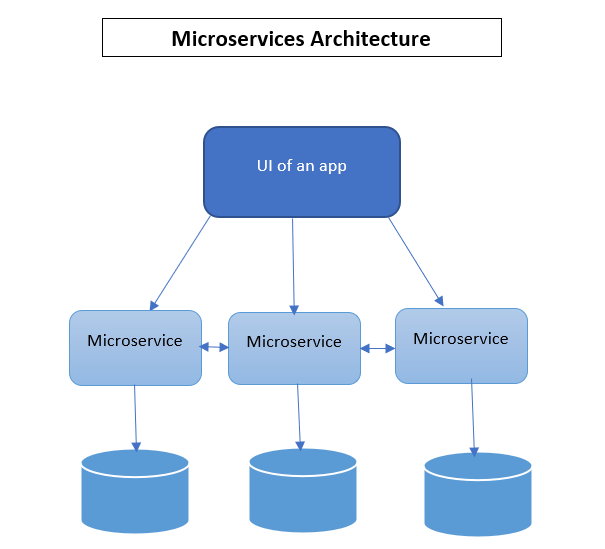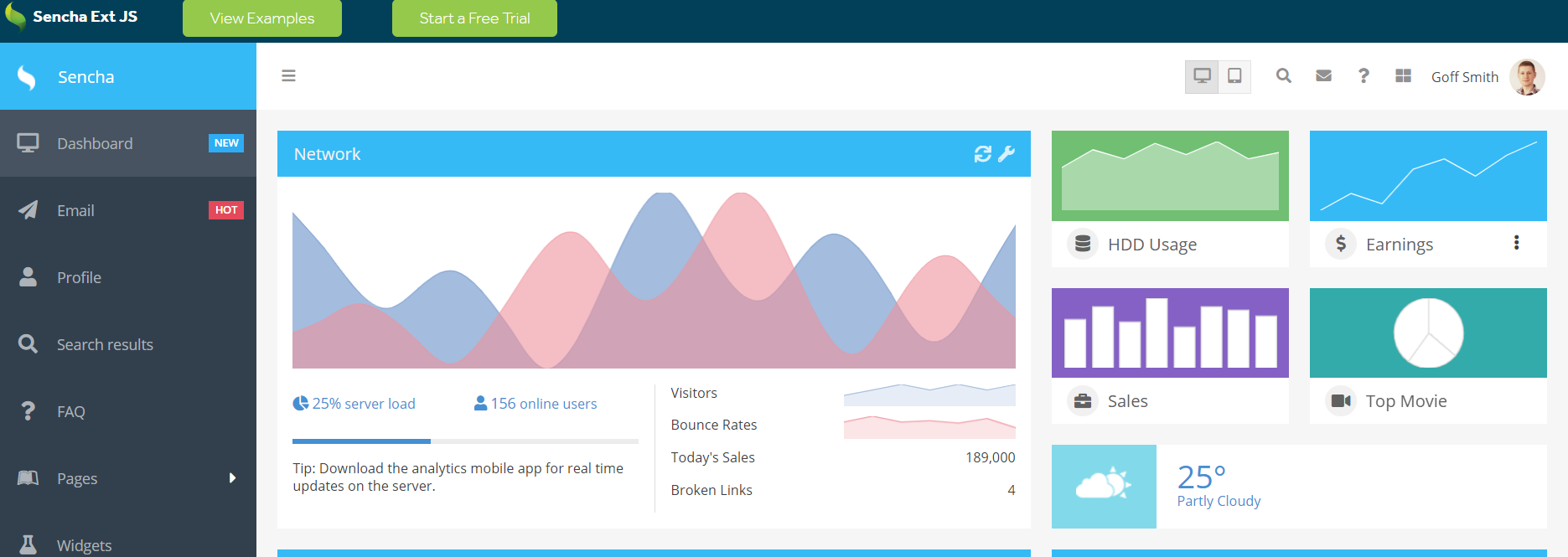Useful Guide to Large-Scale Enterprise Application Development

A crucial aspect of modern web development is building web apps with a global user base in mind. Thus, web apps must be designed to be scalable from the ground up to ensure they can handle the global influx of users when the time comes. In other words, as your app’s user base grows, it needs to scale fast without any performance issues. As a result, businesses worldwide focus on application scalability before they start the development process. However, large-scale enterprise application development is a time-consuming process involving several complex tasks. That’s why many businesses now use enterprise application development services and solutions like Ext JS that enable them to build scalable web apps faster.
This guide will cover all the aspects you must consider for large-scale enterprise application development.
What Is a Large-Scale Web Application?
A large-scale web application is a web app capable of handling high amounts of data and user requests. Moreover, it can adapt to drastic load changes without affecting the performance or the quality of operations. For example, a large-scale web app, such as an enterprise app, can load quickly and process users’ requests efficiently even when millions of users from across the globe are accessing it simultaneously. These apps usually take advantage of CDNs (Content Delivery Networks) to deliver content faster using the server nearest to the users.
What Is the Importance of Scalability in Enterprise Application Development?
Scalability is the ability of a web app to handle heavier traffic and workload without affecting performance, operations, and user experience. Many businesses often focus more on features while planning web app development projects. However, considering scalability while developing enterprise applications is imperative. Scalability directly affects a web app’s performance and user experience. Moreover, it impacts an enterprise’s ability to meet changing network and infrastructure demands. If enterprise apps or business apps aren’t designed to be scalable, there can be service distributions and performance issues, resulting in poor app quality that drives the customers away.
While it’s essential to scale up your app/network when it’s receiving more users, you can also scale it down when facing less demand to minimize your IT costs.
What Are the Benefits of Large-Scale Enterprise Application Development?

Large-scale enterprise application development offers several benefits:
- It helps meet customer demands and enhance the user experience by improving load time.
- Large-scale web apps can handle high volumes of data and customer traffic and efficiently serve millions of users simultaneously.
- When you consider scalability from the outset, you can quickly grow your app without rebuilding it from scratch.
- It helps improve revenue through happy and satisfied customers and improved retention rates.
What Are the Key Steps to Scaling Enterprise Applications?
Evaluate the Need to Scale Your Web App
Scaling an already existing app can be pretty costly, especially if you wish to add more features and advanced functionality. Thus, if you’re considering scaling up your existing software/app, be sure to assess the following factors:
- Will there be an increase in traffic?
- How much increase in customer traffic do you expect?
- Is the increase in users expected during a certain event, or is it for the long term?
- How much increase in traffic can your existing system, network, and servers handle?
- Can your current system and functionality handle the changes you’re planning to make?
- Can you scale up your data storage plan?
Identify Scalability Issues
Once you decide that you need to scale your app, you must determine the most critical scalability issues. Tracking the key metrics below can help identify crucial scalability problems:
- Network Performance: Monitor the time it requires to send data from one process to another and focus on the instances that require the most time.
- CPU Usage: Your app may have performance issues due to high CPU usage.
- Memory usage: Check the amount of memory your app uses and identify the processes that use the most memory.
Use Tools to Track Metrics
You can use an app monitoring tool like Dynatrace, Instana, and Appdynamics to track and evaluate the above-mentioned metrics. Once you’ve selected the right tool for your business needs, you can run tests for the selected metrics. If any issues are found, investigate them and scale your app accordingly.
Choose the Right Infrastructure
Selecting the best infrastructure option for software development is crucial to app scalability. Modern enterprise software and apps use cloud platforms as they provide all the necessary resources and development tools you need for enterprise software development. These include virtual private servers, networking, storage, infrastructure, and runtime environments. Moreover, cloud services allow you to scale up or down, depending on your business needs.
Select the Right Architecture Pattern
Choosing the right architecture pattern for your app’s scalability is essential. Some features will be necessary for scaling your apps, while others may be required only at specific times.
Choose the Right Database
Choosing the right database depends on the data type you want to store. The most common types of databases include relational databases, such as MySQL, and NoSQL databases, such as MongoDB.
Use a Scalable Enterprise Web App Development Framework
Web app development frameworks accelerate the app development process by providing reusable UI components and graphical user interfaces. For example, Ext JS is an enterprise app development framework designed to meet complex business requirements. It offers several pre-built UI components, a high-performance JS grid, and built-in tools for developing scalable enterprise-grade web apps.
Download the free trial and try Sencha Ext JS web app development framework now!
What Are Different Architectural Patterns for Enterprise Application Development?
Layered Architecture
Apps built using this architecture pattern consist of multiple horizontal layers, where each layer performs a specific task, but all layers collectively function together as a single unit. This architecture transfers the data from top to bottom through each layer. Layered architecture is best for new apps that are expected to have a very low user count.
Event-Driven Architecture
Modern apps use event-driven architecture where events are recorded, transmitted, and processed through a decoupled architecture. This design approach is focused on data that describe events, such as shopping cart abandonment or the pressing of a button. This type of architecture is best for user interfaces.
Microkernel Architecture
This architectural pattern consists of a core system and several plug-in modules. These modules help improve the core functionality by providing additional functionality and specialized processing.
Microservices Architecture

Microservices architecture allows developers to build apps as a set of services. These apps consist of several loosely coupled services, where each service has its own codebase that executes a single unique function. Developers can deploy each service independently. Thus, these services are easier to test and maintain. Many modern enterprises use this architecture to build high-performance apps.
How to Design a Large-Scale Enterprise Application?
Choosing the Right Architecture
In addition to choosing the right architectural pattern, using the right framework, programming language, and APIs to build a scalable application is crucial.
Use Test Driven Development (TDD) Approach
TDD is a method of building applications where you create test cases for each requirement. When you already have test cases for all the requirements, scaling your app is easier.
Focus on CI (Continuous Integration)
CI is a modern software development technique that allows us to automate the integration of code changes made by multiple developers into a single software or app. This allows development teams to develop, test, and package applications repeatedly in a reliable way.
Ensure App Security
Ensuring app security allows you to protect your company data and system from cyber criminals. Some common ways to protect your app include multi-factor authentication, HTTPS encryption, reliable password policies, advanced threat detection, disaster recovery options, secure firewalls, permissions, and secure client-server communication. Moreover, you can choose a framework that facilitates secure app development. For example, Sencha Ext JS support a secure development cycle. It provides a wide range of pre-built and pre-tested components to ensure the security of your code base.
What Are Different Ways Of Scaling Your App?
The two main ways of scaling your app include:
Vertical Scaling
In vertical scaling, also called up-scaling, we add more processing power, resources and memory to the existing infrastructure or system.
Horizontal Scaling
Horizontal scaling, also called out-scaling, involves adding additional nodes or serves to the infrastructure or system. The workload is distributed to the additional nodes to reduce the load on the server.
What Are the Key Challenges in Developing Large-Scale Enterprise Applications?
Managing large-scale enterprise app require expensive systems, which can increase in-house costs. Scaling existing apps is also time-consuming as it involves research on what your application needs. Moreover, adding new nodes and servers can be complicated. However, you can solve these problems by hiring professionals or experts in scaling enterprise web applications instead of managing everything yourself.
How Can Ext JS Help You With Building Large-Scale Enterprise Web Applications?

Sencha Ext JS is a powerful JavaScript framework for enterprise application development. It enables the development of highly scalable enterprise-level web and mobile applications for any modern device.
Ext JS comes with over 140 pre-built and fully tested UI components. These include buttons, menus, an HTML5 calendar, charts and graphs, dropdown lists, progress bars, carousels, and many more. It also offers a high-performance JavaScript grid that can handle big data efficiently to build data-intensive enterprise apps. Moreover, Ext JS has a layout manager that enables users to manage the display and control of data and components across multiple screen sizes, devices, and browsers.
Ext JS also offers several supporting Sencha tools, such as Sencha Architect, Sencha Cmd, Sencha Themer, Sencha Test, Sencha Stencils, and more.
Conclusion
Modern web apps are built keeping scalability in mind. This means these apps can scale quickly when they receive high customer traffic and user requests. Two common ways of scaling apps include horizontal scaling and vertical scaling. However, scaling existing web apps can be costly and time-consuming. But by choosing the right tools, architectural pattern, database, and framework, you can scale your apps efficiently. For instance, you can use the Ext JS JavaScript framework to build highly scalable and secure web apps using pre-built and fully-tested UI components.
Frequently Asked Questions (FAQs)
What Is a Scalable Web Application?
A scalable web app is one that is capable of handling large volumes of data and user requests.
What Makes a Website Scalable?
It is scalable if a website can handle a high volume of customer traffic without comprising performance, user experience, and operations.
What Are Some Examples of Enterprise Applications?
Examples of enterprise apps include Oracle SCM, WordPress, Salesforce, and Sage Intacct.
Start using Sencha Ext JS today and see how it helps you with enterprise application development!

Did you know that nearly 90% of startups fail? And one of the biggest reasons…

The Sencha team is excited to announce the latest Sencha Rapid Ext JS 1.1.1 release…

React is perhaps the most widely used web app-building framework right now. Many developers also…









